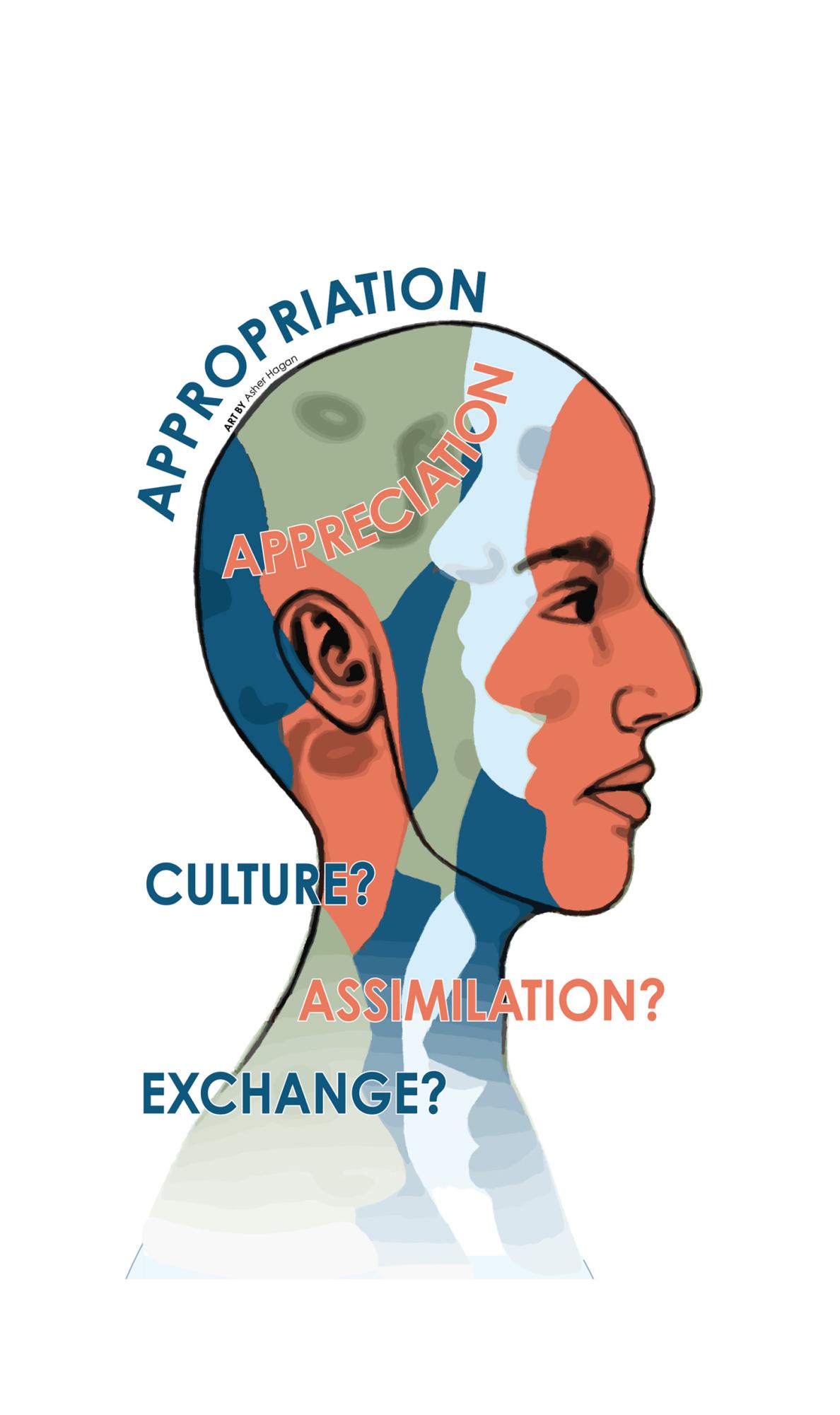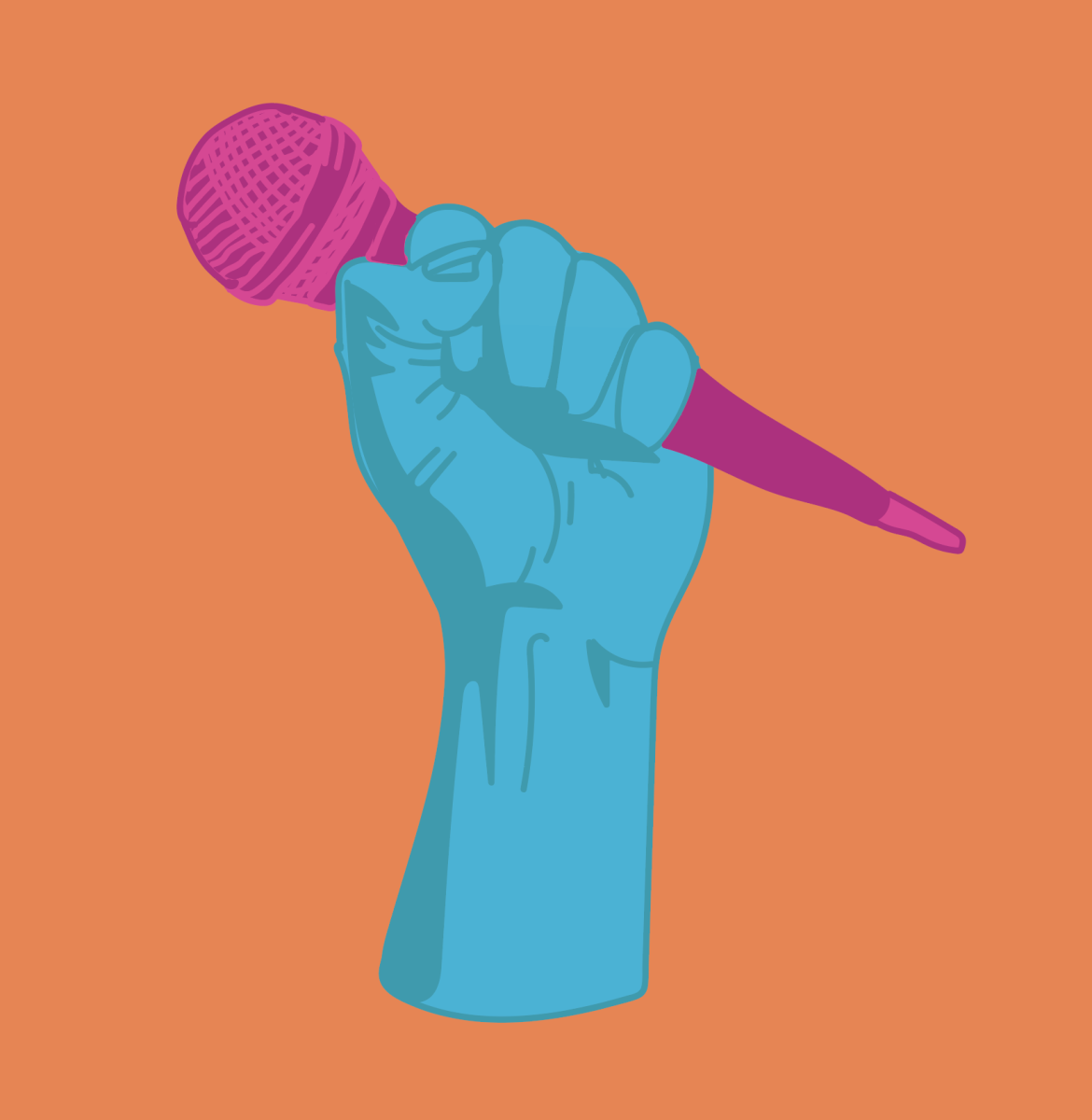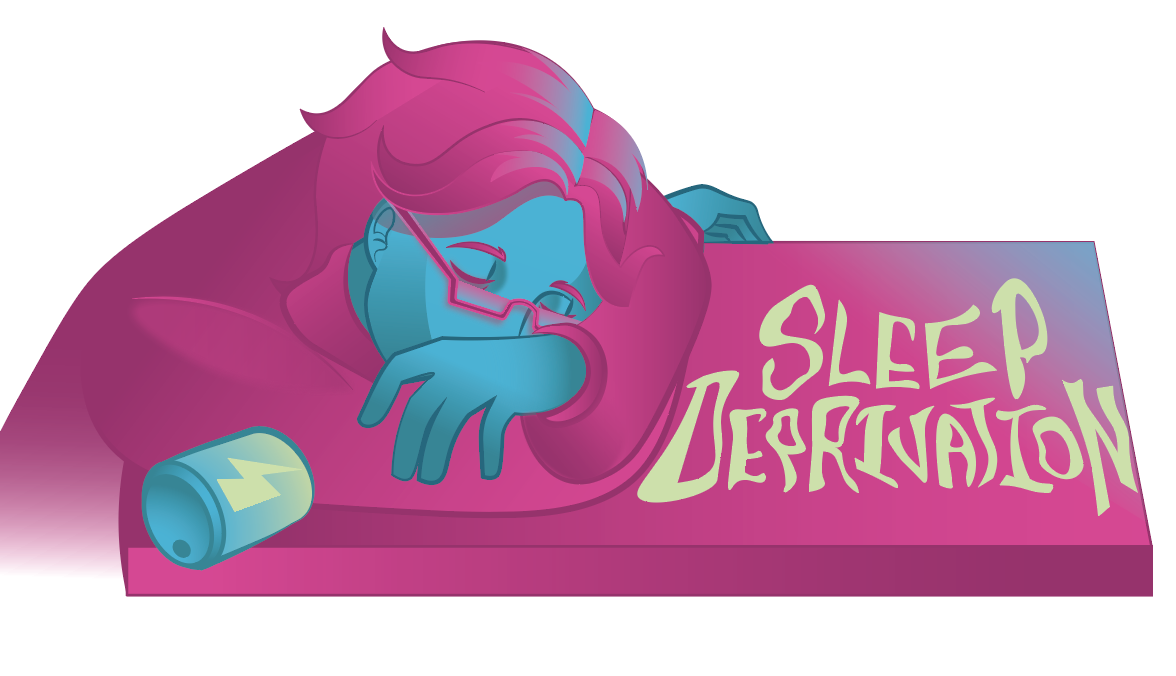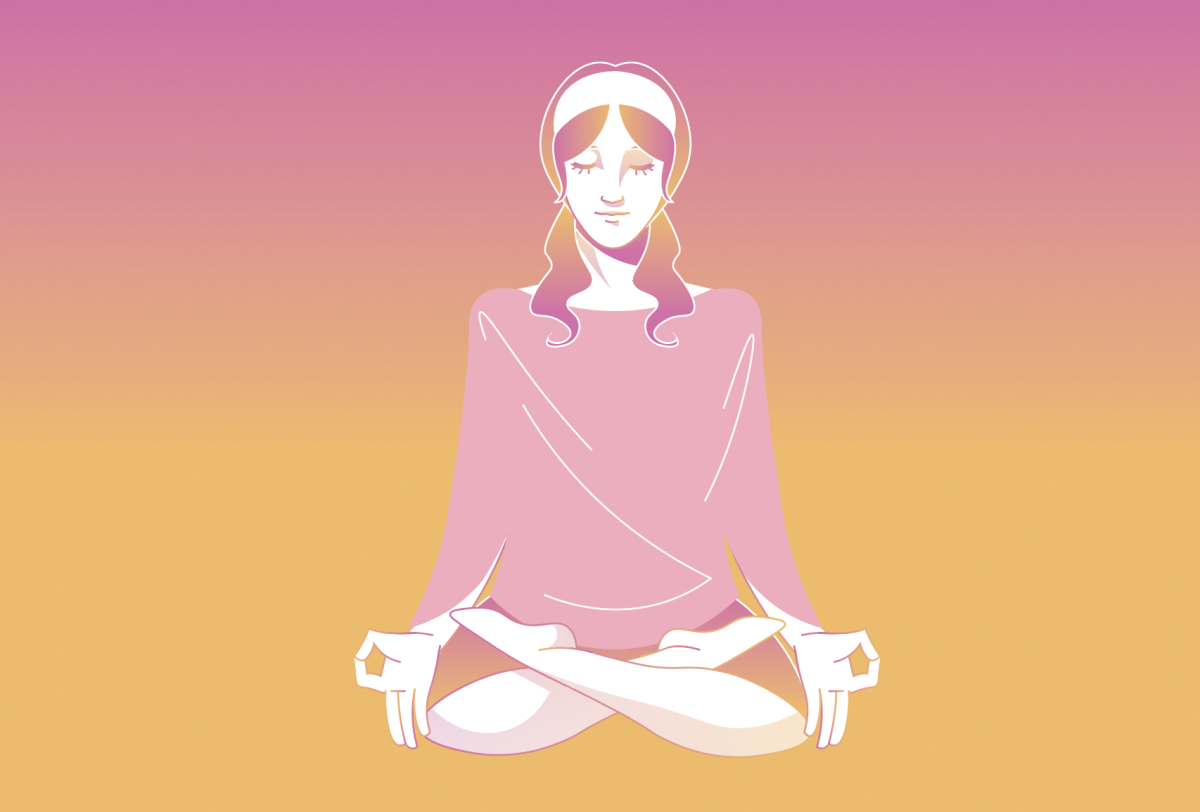Acknowledging appropriation

Sophomore Izi Kalyoncuoglu lives in two very different households.
At her mother’s house, Kalyoncuoglu celebrates the Hispanic heritage that has traced her mother’s ancestry for generations; at her dad’s, she explores her Turkish culture with the language, food, and traditions from her father’s history.
She loves nothing more than caring for and supporting her family, no matter how different they can be. Displayed on the ofrenda in her mother’s home, Kalyoncuoglu smiles at the nostalgic photos of her late family and friends, happy to recall the way her family comes together, celebrating their love for each other and their culture.
“Both halves of my family are extremely different, but I’m used to it,” Kalyoncuoglu said. “There are many aspects of our home cultures that we stick to; my parents speak the languages that relate them to their history. This is great for me because it gives me a unique opportunity to relate to the cultures and to be exposed to things that others in America may not get to experience.”
She loves that her heritage allows her to share different cultures, and she doesn’t understand how anyone could attempt to hurt the communities she loves so much. Kalyoncuoglu knows that cultural appropriation is a common problem in the United States; she believes it is a problem that will always be around, hurting her community with each and every instance of incorrect assumptions and stereotypes.
“Our education system often speaks about history and cultural developments through a single, white, colonial perspective,” Kalyoncuoglu said. “Not everything they say is correct, and it is very biased. We aren’t taught from multiple perspectives, so we are shown depictions of culture that often give misleading or incorrect information.”
According to Britannica, cultural appropriation takes place when members of a majority group adopt cultural elements of a minority group in an exploitative, disrespectful, or stereotypical way. This occurs when dominant groups borrow cultural practices from marginalized groups who have historically faced oppression for those same practices.
“Cultural appropriation can often be mixed up with cultural appreciation,” Kalyoncuoglu said. “The way I see it, as long as there isn’t any clear disrespect, it’s okay for people to explore traditions from other cultures. For example, wearing a traditional dress for a cultural event is okay, because you are wearing it in an appropriate setting, and are showing off a beautiful part of the culture. But wearing it to get more likes on social media is a different story; you’re not appreciating the culture, you’re simply exploiting it for fame and attention.”
Senior Daria Abramovitch left Israel when she was five, moving to live in America with her immediate family. Even though she has left Israel, she hasn’t left the culture; she especially values the holidays and food that connect her with her community.
“Being further from my extended family has made it even more important for me to connect with my culture, because it’s what ties me to my heritage,” Abramovitch said. “It’s important to make sure my religion isn’t misunderstood or misrepresented, because Judaism has a uniquely violent history that has resulted from the misrepresentations of my people.”
According to MTV Decoded, there is an incorrect belief that, in holding someone accountable for acts of cultural appropriation, they are unfairly being labeled as racist. Discussions on cultural appropriation focus on misrepresentations of marginalized cultures; it does not purposefully target the dominant white culture, or consciously attempt to accuse all white people of appropriation.
“If you get called out for appropriation, you need to adjust your actions,” Abramovitch said. “If someone from that culture explains why your actions are harmful, but you decide to continue those actions anyways, you are being extremely racially insensitive.”
According to the New York Times, cultural exchange occurs when members of different backgrounds share their own heritage and customs with others. This is different from appropriation, because the exchange is mutual, and members are being invited to enjoy the culture. Ethnic studies teacher Chrissy Hejny believes cultural exchange can be a great tool for cultivating understanding.
“Exchange is very important, but we don’t have enough of it,” Hejny said. “We tend to fear other cultures, because they’re different from our own. Appropriation happens when we give into this discomfort, and we start cherry-picking what we like from other cultures, and don’t participate in exchange with genuine understanding.”
Although white culture is the largest force of appropriation, this practice isn’t exclusive; anyone has the ability to appropriate elements of marginalized cultures. Abramovitch believes that it’s often white culture that appropriates, but they are also the largest demographic to defend minorities for actions that she believes aren’t truly offensive.
“Cultural appropriation is a multifaceted problem,” Abramovitch said. “White Americans tend to attack appropriators on behalf of a culture they aren’t part of. These people have the least say, so they should leave the minorities to decide what offends them.”
One of the most well-known debates over appropriation centers around dreadlocks. According to Esquire, this hairstyle has historically been worn among African American communities to symbolize a connection to Africa, and a rejection of Western domination. Although anyone can wear their hair in this style, African Americans often face stigma for wearing dreads; some companies and schools even prohibit dreads. Meanwhile, white celebrities receive praise for wearing these hairstyles.
“The problem isn’t that white women want to wear their hair like that, we should all be able to wear whatever hair we want,” Hejny said. “The issue is that black women have been discriminated against for their hair, for centuries. They’ve not been able to wear their own cultural hairstyles because white supremacist culture doesn’t allow it; but there’s no problem when white women decide to wear dreads.”
Not all appropriation is intentional. In fact, Hejny believes that most appropriation stems from consumerist culture in America, which takes the desire to show appreciation for another culture, and turns it into a thoughtless item to be bought and forgotten mindlessly.
“Appropriation is hurtful because it paints a false picture of different cultures and peoples,” Hejny said. “It takes a belief, an idea, and turns it into something that can be used for consumption, as a capitalistic commodity or as entertainment. It’s generalizing, it’s stereotyping, and it’s unacceptable.”
Take the example of indigenous peoples. Every year, the Halloween costumes return anew, featuring feathered headdresses, moccasins, and colorful leather clothing. According to the National Museum of the American Indian, dressing up as a Native American is never appropriate, and costumes like these are inherently harmful examples of the stereotypes placed on indigenous people.
“Costumes perpetuate the narrative that indigenous people are a thing of the past who no longer exist, which isn’t true,” Hejny said. “This idea helps us ignore the fact that there are millions of indigenous people in the United States, who have been shoved off to live on reservations in unfair circumstances.”
According to Education Week, this erasure stems from American education, as Native people are hardly mentioned in standardized textbooks after the 1890s. Hejny believes this suggests that Native culture was wiped out by white settlement.
“As children, we are taught about how Natives lived ‘back then,’” Hejny said. “While I understand that it’s not appropriate to teach kindergarteners about the current struggles with addiction and poverty among Native peoples, we can still balance that narrative, and teach real stories of the Natives who are here today, living their very real lives.”
The Maori of New Zealand wear facial tattoos that hold familial and cultural significance. In 2007, French fashion designer Jean-Paul Gaultier used these tattoos in a sunglasses ad, stripping them of their cultural meanings to sell his products.
“Consumerist culture affects everything in America,” Abramovitch said. “You can’t get away from it, and advertisers have been using different methods to get attention for a long, long time. Misrepresenting cultures is damaging, and this practice doesn’t help.”
In the seasonal area of the local grocery store, HEB, there sits a section filled with items featuring Dia de los Muertos products. Plates, mugs, napkins, straws, and pillows all replicate the distinct Latino style used to celebrate this holiday. According to Hejny, this portrayal is exploitative and unfair.
“What are we doing with this? We are currently keeping these people, this culture, on the other side of a barbed-wire border,” Hejny said. “We are stealing this one aspect of their culture, a part we don’t even truly understand, and putting it on display. All the while, our nation is forcing these people out of the country, separating their families and holding them at the border. Does that seem fair?”
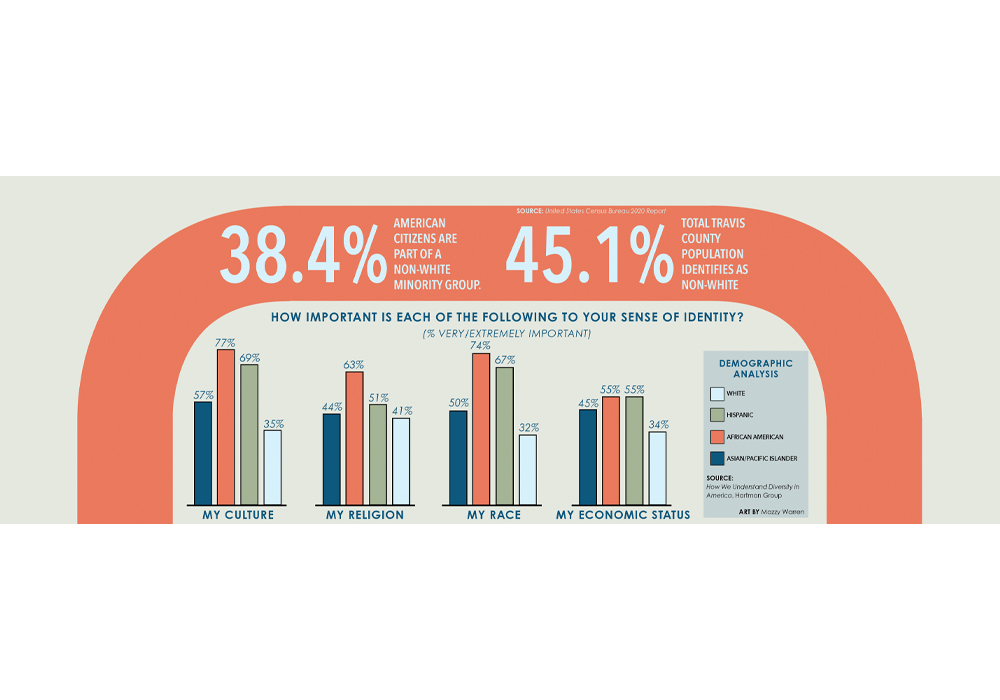
Appropriators don’t usually believe their actions are offensive; Hejny claims this is because it is not their culture getting disrespected. Some may say that they received permission from someone in that culture, so their actions are not offensive. Abramovitch believes everyone should remember that one person doesn’t speak for a whole community.
“It’s always safer to ask if your actions are okay before doing something you’re iffy about,” Abramovitch said. “But it’s important to remember that one member doesn’t speak for everyone, that’s just poor representation.”
Plenty of people don’t believe appropriation is a real problem. To them, Hejny says this: You’re not listening.
“You aren’t listening to the stories and experiences shared by other people,” Hejny said. “You aren’t listening to hundreds of years of discrimination and systematic oppression against groups based on their religion, their language, or the color of their skin. Please, just sit down and listen; because it’s not about individuals being bad, it’s about systems being bad, and we can dismantle those systems if we just listen to one another.”
Hejny believes appropriation is becoming less common among individuals, although it still runs rampant among many companies and corporations. Social media has been credited for raising awareness for cultural appropriation, with movements like the hashtag campaign #mycultureisnotacostume. Conversely, Abramovitch believes that social media has further contributed to the issue.
“Social media gives you access to so much negative information,” Abramovitch said. “I don’t think appropriation would exist if social media didn’t, because I have never seen anybody perform these damaging acts of appropriation, except on social media.”
Hejny encourages students to recognize the acts of appropriation that occur around them. Students should ask themselves: Does this culture face a history filled with oppression? Am I able to simply remove something when I get tired of it, and return to a privileged culture, when others can’t? She encourages students to learn, ask questions, and be curious.
“Students and future generations should not be taught from just one, colonial view, but from multiple cultural viewpoints,” Kalyoncuoglu said. “Humans are often uncomfortable with things they are unfamiliar with, and they try to forcefully change it into something more familiar. But we need to get out of that safe zone and explore other ideas. Visit the homes of those cultures. Speak to members of those groups. It’s a great way to expose yourself to the many cultures in other parts of the world.”
Cultural consciousness is not meant to discourage exploration of another culture. The goal isn’t to shame others out of enjoying diverse cultures, but to inspire a movement of valuing the voices of that background. The goal is to show genuine love, respect, and understanding for the things that aren’t your own.
“Culture is our life,” Hejny said. “It’s our way of living and speaking and acting every day, it’s our ideas and our values, which have been passed down for generations and generations. It’s important to live your life and to love your life, but you also need to allow and enable others to do the same. In doing so, you will be promoting the love and understanding that our country needs so badly right now.”
With such a small percentage of minority students at Bowie, it can be easy for those experiences to be lost, and sometimes manipulated. Dispatch Reporter Audrey Cullinane is joined by Bubba Infante and Sanvi Patel to discuss the dangers of cultural appropriation at Bowie, and what we as a community can do to help eliminate it.
Your donation will support the student journalists of James Bowie High School. Your contribution will help cover our annual website hosting costs. Any contributions made through this service are NOT tax deductible. If you would like to make a tax deductible donation OR to subscribe to our print edition, please contact us at [email protected].



